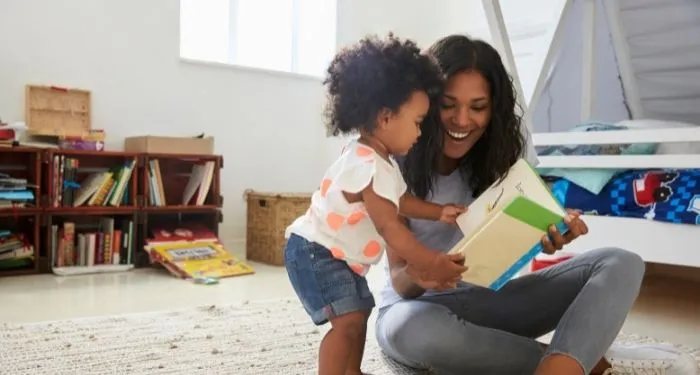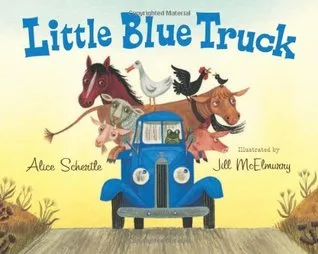
Not Every Picture Book Needs to Be a Board Book
If you’re a parent or you’ve bought books for a new baby, then chances are you’re familiar with board books: they’re the all-cardboard, mini versions of picture books that are meant for the youngest humans. In my time as a bookseller and then later as a librarian who helped parents find books for kids of all ages, I would often encounter adults who were frustrated that certain books weren’t available in board book format. Many times, these adults were recalling picture books they remembered as kids, and wanted to buy it in the board book format for the new baby in their life.
Sometimes the considerations were pricing (a hardcover picture book is priced around $18–20 while board books tend to be more like $8–12) but more often than not, it was a matter of durability. Adults were wary of shelling out almost twice as much on a book with paper pages when they couldn’t trust their exuberant young readers to treat books gently. I understand the frustration, and while I do wish that picture books offered a wider range of durability and price points, I think there’s valid reasoning why not every picture book needs to be a board book.
Picture Books vs. Board Books
Picture books can be either hardcover or paperback, and they have paper pages. They come in a wide range of trim sizes depending on design, and they typically feature 24 or 32 pages. Picture books can be geared toward a wide range of ages depending on their content, but generally speaking picture books are great for ages 2 and up. (There are some exceptions to this, of course!) Board books, in contrast, tend to be smaller and hardback, with durable board pages rather than paper. Because of this, they’re perfect for the littlest baby and toddler readers who might as soon look at the pictures as they would chew on the pages. Board books also tend to only be 16–24 pages, and are priced lower than most hardcover picture books.
How Are Board Books Made?
Board books tend to be produced in-house, which means that rather than accept board book manuscript solicitations from writers and illustrators or their agents, publishers will determine what they are looking for in their board books. That may involve hiring artists and writers to come up with story-less concept board books (think ABC, numbers, shapes, and opposite books) or looking at their existing catalogue of picture books and deciding how to adapt these picture books into a board book. However, very rarely you will see instances of an original book appearing only in board book format, such as Little Blue Truck (and sequels) by Alice Schertle and Jill McElmurry or author/illustrator Sandra Boynton’s board books. This makes sense — the style and storylines of these book appeals to very young children and the publishers probably knew that board book readers would be the primary audiences for them. However, board books aren’t the most cost effective book to produce, and because they are priced between $8 and $12, the profit margin tend to be a bit narrower than typical picture books. From a financial perspective that publishers may not even want every picture book to be adapted.
Should Every Picture Book Be a Board Book?
When it comes to adapting picture books into board books, it might be helpful to first remember the primary audience and consider what makes a good board book. Parents and adults tend to purchase board books for little ones under 2 years of age because of their durability, bright illustrations, and simple yet engaging text, because children under the age of 2 need eye-catching illustrations and often don’t have the attention spans for complex stories. There are some excellent picture books for very young readers that have successfully been adapted to board book format — The Very Hungry Caterpillar by Eric Carle, Goodnight Moon by Margaret Wise Brown and Clement Hurd, and The Snowy Day by Ezra Jack Keats. Each have simple storylines, and bright bold illustrations that contribute in making their adaptations a success.
Now consider one of the most popular picture books of all time, the Caldecott Award–winning Where the Wild Things Are by Maurice Sendak. I adore this picture book, and often tear up every time I read it as an adult…but no board book version of it exists on the market. This makes sense to me, although I can’t tell you how many adults would be shocked by this when I was a bookseller. One of the biggest appeals of that book is Sendak’s gorgeous illustrations, and I cannot imagine them being shrunken or simplified to fit on a board book’s smaller pages. I also really love how the majority of text of that book is a run-on sentence that spans multiple spreads. Most board books aren’t as long as picture books, so in order for an adaptation to work, the text would have to be edited or re-arranged on the page. While that might not seem like a big deal to some, the interplay between text and images and the careful planning of page spreads are all considerations in writing and designing picture books. One should not edit picture books lightly, nor, in my opinion, without the input and permission of their authors.
There are, of course, board books that tackle big ideas or concepts that might appeal more to caregivers than the little ones themselves, but I think as long as they have the illustrative appeal and also do the work of exposing children to new and inclusive ideas, they work. The first book that immediately comes to mind A is for Activist by Innosanto Nagara, which is an excellent diverse board book for little ones. While you’re not likely to be able to explain the concept of an activist to a toddler, it’s an important ABC book that showcases diversity not traditionally shown in board books, and exposure to diversity is essential because children as young as 9 months start to form biases based on appearance. There are a plethora of board books that fall into this category, from Baby Feminists by Libby Babbott-Klein and Jessica Walker to the BabyLit series of board books, which are mostly concept books inspired by classic literature such as Pride and Prejudice or Wuthering Heights.
But I do question the need for picture books that are geared toward 5- to 10-year-olds with longer text and more detailed illustrations getting squeezed into the board book format, especially when those board books are then offered to babies and toddlers who might not be developmentally ready for such a book. While there are some accessibility bonuses that shouldn’t be overlooked (in terms of price point and durability of the product), I wonder if this is the best way. Could publishers choose to offer a popular picture book for 5- to 7-year-olds in paperback format first, with a cheaper price tag? Or could they look into developing larger, unabridged board book versions of popular picture books for slightly older children who might be a bit rough on pages still? There are trade-offs to each path.
Ultimately, we live in a world that is driven by capitalism, so there is a market for popular picture books to be adapted in board book format, even if they’re not perfectly age-appropriate for those under 2 years of age, I think we’ll continue to see those books appear on shelves. But if you’re a parent or just a well-meaning reader shopping for a baby or toddler, it might be worth considering what board books will truly appeal to the little reader you’re gifting!
For some great board book suggestions, check out our discussion of children’s board books featuring disabled people and LGBTQ+ inclusive board books!















